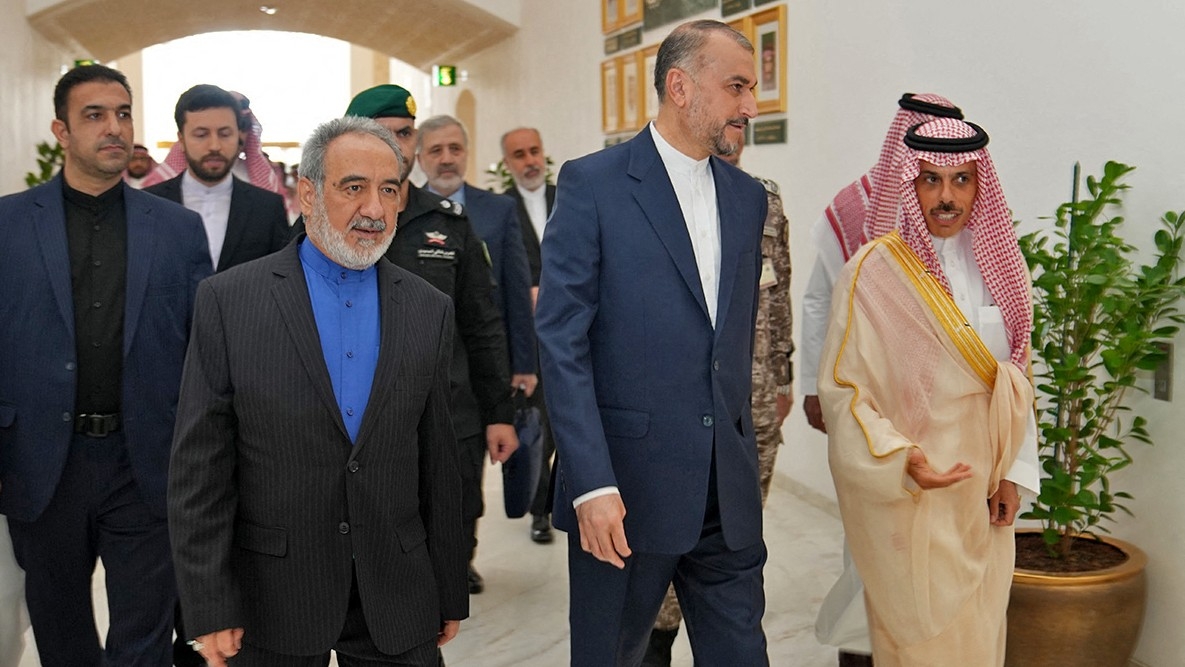Saudi Arabia and Iran exchange ambassadors after seven-year fallout

Saudi Arabia's ambassador to Iran has arrived in Tehran, while his Iranian counterpart has touched down in Riyadh, continuing the restoration of relations between the two countries.
The former regional rivals normalised ties during China-brokered talks in March, following a seven-year fallout.
Saudi ambassador Abdullah Alanazi said that the Gulf kingdom recognised "the importance of strengthening ties [and] increasing engagement" upon his arrival in the Iranian capital on Tuesday.
Alanazi previously served as Riyadh's ambassador to Oman.
His Iranian counterpart, Alireza Enayati, arrived in Riyadh on Tuesday, according to Iran's IRNA news agency.
Stay informed with MEE's newsletters
Sign up to get the latest alerts, insights and analysis, starting with Turkey Unpacked
Prior to this post, Enayati served as Iran’s ambassador to Kuwait from 2014 to 2019 and then became the director general of Gulf affairs at the Iranian foreign ministry.
In June, Iran reopened both its consulate in the Saudi city of Jeddah and its embassy in Riyadh.
Tension since 1979
The two countries have had a tumultuous relationship dating back to Iran's Islamic revolution in 1979.
The introduction of a new, theocratic Shia republic was seen as a threat in Saudi Arabia, who - among other Sunni-ruled regional neighbours - accused Tehran of attempting to export its revolution and assert influence in the region.
Saudi Arabia tacitly supported Iraq during its war against Iran in the 1980s, and the six-nation Gulf Cooperation Council (GCC) was set up partly in response to the conflict.
Ties between Riyadh and Tehran nosedived in July 1987 when Saudi security forces violently cracked down on an anti-US protest by Iranian pilgrims in the holy city of Mecca during the Hajj pilgrimage. Some 402 pilgrims were killed, of whom 275 were Iranian.
After a relative easing of tensions in the 1990s, hostilities were reignited in 2011 following anti-government protests across the region in the Arab Spring. Tehran and Riyadh found themselves on opposing sides of flashpoints and conflicts, including in Bahrain, Syria and Yemen.
The most recent breakdown of relations came in 2016 after Saudi Arabia executed Shia cleric Nimr al-Nimr, who had been involved in anti-government protests in the country's eastern region.
Iran strongly condemned the execution, and protesters attacked Saudi diplomatic missions in Tehran and in the northeastern city of Mashhad. Saudi Arabia subsequently cut ties with Iran.
The detente in March forms part of efforts by Iranian President Ebrahim Raisi to normalise ties with countries in the Middle East, including Egypt and Bahrain, as part of a "neighbourhood-centric" foreign policy.
Saudi Arabia has also sought to lower tensions with Iran in order to focus on domestic affairs and the diversification of its economy.
Middle East Eye delivers independent and unrivalled coverage and analysis of the Middle East, North Africa and beyond. To learn more about republishing this content and the associated fees, please fill out this form. More about MEE can be found here.





